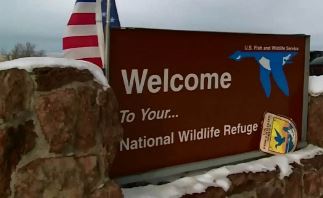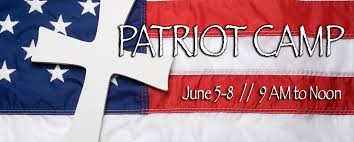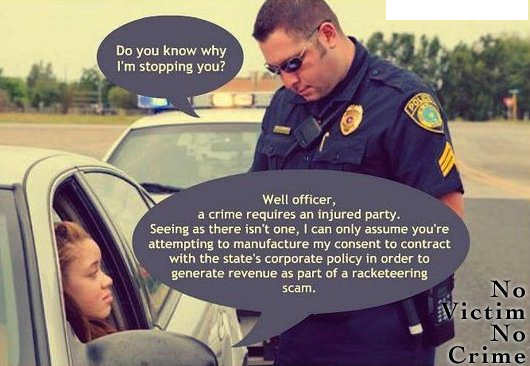![IMG_20160128_214818798_HDR[1]](https://rangefire.us/wp-content/uploads/2016/02/IMG_20160128_214818798_HDR1-300x169.jpg) Editor’s Note: This post was originally published in 2016, but we are republishing it now, in memory of Dr. Angus McIntosh.
Editor’s Note: This post was originally published in 2016, but we are republishing it now, in memory of Dr. Angus McIntosh.
If you ever get the chance to sit through one of Dr. Angus McIntosh’s workshops, it’s a lot to try to absorb in one setting, and I mean a lot. That’s why I’m glad I got a chance to let it sink in slowly, little by little, over the course of four workshops. And I’ve still got a lot to learn. But what have I learned so far?
One of the first things I have learned is that Ranchers actually have a lot more rights than the BLM and a lot of other people want us to believe. And those same rights apply to other productive beneficial resource users like loggers, miners, hunters, recreationists, etc. In his presentations, Dr. McIntosh goes through a whole bunch of Congressional Acts, including the Stock Raising Homestead Act of 1866. He explains the history, philosophy and reasoning behind those Acts. He explains the whole natural law concept behind those Acts, to the effect that when people mix their own sweat, labor and resources with the land and the resources that belong to the land, and take possession, and make improvements, they acquire property rights and interests. That is the whole philosophical concept underlying the Homestead Acts, and a myriad of other laws that were passed by Congress to dispose of interests in “surplus” lands in the West.
McIntosh talks extensively about the various split resource estates in a piece of land, including the surface estate, the subsurface estates, including the mineral and oil and gas estates. He talks about the forage estate, and the timber estate, the water estate, and the access estates. And he talks a lot about definitions.
“What,” he asks, is “Public Land?” He says that according to the definition, “public land is land that is open to entry and settlement, upon which there are no other rights or claims.” In other words, once someone starts using and claiming an interest in the land, including the forage and water estates, for example, according to the definition, it is no longer open to entry and settlement. Because someone else is claiming the forage and water estates, by definition the land ceases to be “public land,” per se. He explains that although the federal government may continue to hold title to the land itself, including the mineral estate, that title may be subject to a variety of other split estate property interests in the forage estate, the water estate, timber estate, and access estates.
He explains how RS 2477 rights of way are a good example of how this works. They constitute part of the “access estate,” based on prior use. And even under FLMPA, prior existing rights, including access rights, are recognized and grandfathered. And he says the same principles apply to the forage and water estates. He talks about the importance of terminology and the meaning of the phrase “grazing allotment.”
 One of Dr. McIntosh’s most helpful exercises is drawing out what he calls “Bubba’s Napkin Notes,” as he shows how a ranch is typically developed, with private “base property,” along with a grazing allotment, which includes water developments, fences, corrals, and a whole bunch of stock trails leading back and forth between all the water sources. He explains all the various laws that create property rights “in the nature of an easement,” on the grazing allotment, and those parts of the ranch that the federal government still holds title to, subject to a variety of split estate property right interests.
One of Dr. McIntosh’s most helpful exercises is drawing out what he calls “Bubba’s Napkin Notes,” as he shows how a ranch is typically developed, with private “base property,” along with a grazing allotment, which includes water developments, fences, corrals, and a whole bunch of stock trails leading back and forth between all the water sources. He explains all the various laws that create property rights “in the nature of an easement,” on the grazing allotment, and those parts of the ranch that the federal government still holds title to, subject to a variety of split estate property right interests.
He explains how it is the private property interests that help insure public access for hunting, fishing, camping and recreation. One of his catch phrases is: “Multiple rights, multiple use, and multiple access. . . . No rights, no use, and no access.”
McIntosh explains how the whole scheme started changing in 1976, with passage of the Federal Lands Management Policy Act (PLPMA) and the Forest Service Management Policy Act. But as part of his presentation, he shows slides with exact language from those Acts, which specifically state that they are “subject to all valid pre-existing rights.”
When asked about the various court cases that have cut both ways, including some that have ruled against ranchers and others over the years, McIntosh explains that is only part of the picture. He says there are other cases where such rights have been properly pled, recognized and protected. He says that many times it comes down to how a case is “pled” before the court. He says that if cases are not pled correctly, courts don’t have an opportunity to rule accordingly, because in most cases they are bound to rule based on the way the case is pled. He says that this issue alone has created much confusion and misconception that has been perpetuated over the years. He maintains that to a large extent the Hage cases were pled correctly, and resulted in a series of favorable rulings at the trial court level. He maintains that the recent reversal by the Ninth circuit was fully expected based on the liberal leanings of the Ninth Circuit, and he believes the Tenth Circuit would have probably reached a different conclusion. He believes the Ninth Circuit opinion should be appealed to the U.S. Supreme Court, and acknowledges that it may take a contrary ruling in another circuit before the Supreme Court may ultimately be willing to address these important issues.
In conclusion, McIntosh explains the 4-5 things all ranchers should do to protect their rights: 1) study and know the laws that apply and how they work; 2) do a thorough title search on all property interest elements of the ranch, including the grazing allotment, water rights, etc.; 3) identify and file on all water rights and water locations associated with the ranch, including the grazing allotment; 4) document all communications and correspondence with federal agencies, and keep a file of everything, and; 5) don’t sign anything you don’t agree with.
Dr. McIntosh emphasizes that the reason federal agencies have gained so much power and control is because we have let them. We have slowly but surely allowed them to exercise greater dominion and control, and to do what they are doing, without standing up and doing anything about it. Consequently, they have slowly but surely bound our hands with multiple strands of flaxen cord.
After learning and thinking about all this, some folks in Harney County (including Travis Williams, Rick Habein, Duane Schrock & Melodi Molt) came back with a real good question. They explained how, when Dwight and Steven Hammond were convicted of “arson terrorism,” the BLM took action, on the basis of their convictions alone, to cancel their existing grazing permits. Basically, according to Dr. McIntosh, the BLM unilaterally took action to take Hammonds’ private property interests in their grazing allotments without due process or just compensation. After everything else the federal government had done, which was completely contrary to the exception in 18 USC Section 1855, which states: “This section shall not apply in the case of a fire set by an allottee in the reasonable exercise of his proprietary rights in the allotment,” in addition to convicting Hammonds under a bogus law, using bogus evidence, and sending them back to prison a second time, and forcing them to pay an ungodly amount of restitution, the BLM is also seeking to flat-out steal their grazing allotment.
So the question was, why not take Dr. McIntosh’s principles, and pursue an action to protect Hammonds’ rights in their grazing allotment? It is the same kind of action that may be pursued to protect the rights of the Finicum family and/or Adrian Sewell, in New Mexico, in their own grazing allotments. This could help create multiple opportunities for potentially conflicting rulings in different circuits that could create a good opportunity for a test case to the U.S. Supreme Court.
It is interesting how these different situations are now being sewn together and now make more sense based on what is going on and what has happened once we stand back and gain a better understanding of the fundamental principles and laws that apply, versus what has happened.
In the end, the property rights concept is not rocket science. It’s actually common sense.




Comments
Comments are closed.